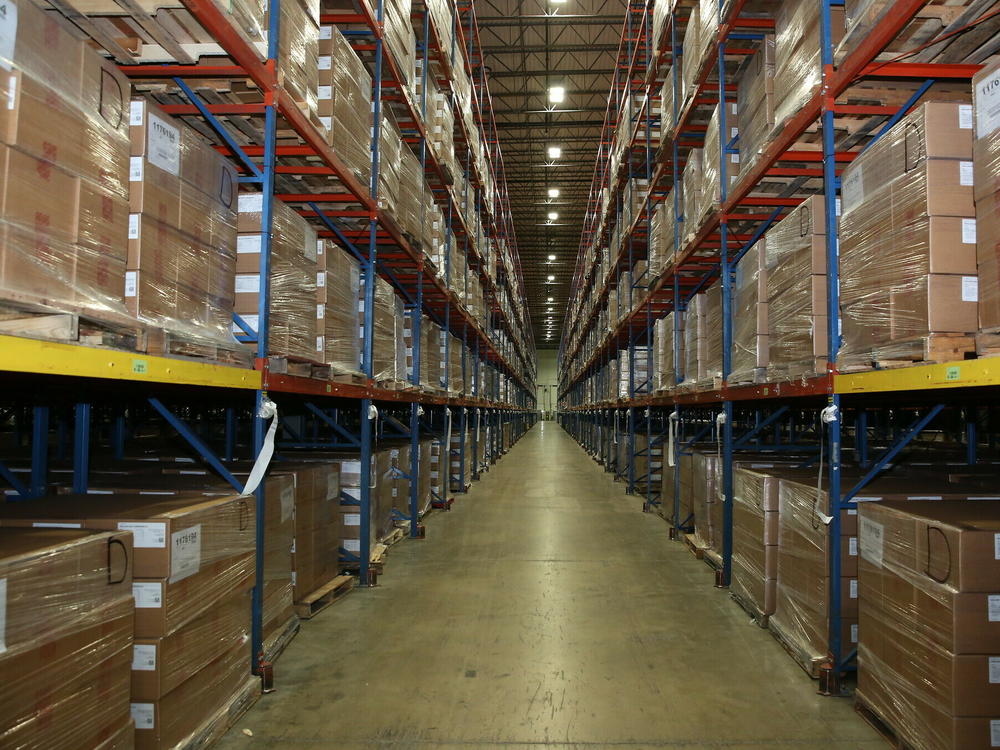Section Branding
Header Content
Why does the U.S. government lock medicine away in secret warehouses?
Primary Content
Surges in COVID-19, the flu and other respiratory illnesses are forcing the U.S. government to do something it normally reserves for emergencies: release hoards of stockpiled Tamiflu to states in dire need of more flu medicine.
The move from the Department of Health and Human Services on Wednesday came via the Strategic National Stockpile (SNS), which allows the government to tap its reserves of medicine and other medical supplies when a mass outbreak or other health crisis occurs.
It's true. There is a network of warehouses, each the size of several Walmart Supercenters, located in top-secret locations across the country. And while much about the stockpile remains a secret, it continues to play a vital role in the COVID pandemic.
Here's what we know about the multibillion-dollar inventory of vaccines, equipment and other medical supplies designed to help save lives.
What kind of supplies does the SNS stockpile?
In short, pretty much any medical supplies that could be useful during a mass outbreak or health crisis.
The Administration for Strategic Preparedness and Response (ASPR), a division of HHS, details some of the inventory on its website:
There are 1,960 containers of nerve agent antidotes, known as chempacks, in case of a chemical incident, in more than 1,340 locations, such as fire stations and hospitals, across the U.S. More than 90% of Americans live within an hour of one of these locations, according to ASPR.
If a natural disaster or another catastrophe affects the number of hospitals or amounts of medical equipment available, the SNS can deploy "rapidly deployable caches" that come with a bed and other medical supplies. Each of these federal medical stations can house 50 to 250 patients and comes with enough pharmaceutical supplies to last for three days.
The SNS also says it has "millions of masks, gloves, gowns, N95 respirators, face shields and other necessary supplies" and 16 different models of ventilators at the ready for those with COVID.
What is the point of stockpiling so much medicine?
The SNS is supposed to be there in case we need it. By having so many medical supplies in its reserves, the nation is supposed to help when local agencies run out, or when massive amounts of medical supplies are needed at a moment's notice.
The SNS "serves as the nation's repository of medicines and supplies for use if there is a public health emergency, such as a terrorist attack, flu outbreak, or natural disaster, severe enough to cause local supplies to run out," according to the Centers for Disease Control and Prevention.
When did the U.S. government start doing this?
Congress authorized the creation of the SNS, then known as the National Pharmaceutical Stockpile, in 1999, the CDC says.
The federal government originally created the SNS to combat chemical or biological attacks. It has since been used to help with outbreaks, such as the Ebola virus and monkeypox (now called mpox), but officials began to take note of its use when the pandemic led to drastic shortages of critical medical supplies.
But despite its creation, budget cuts, issues with the global supply chain and manufacturing problems made the SNS ill-equipped to deal with the pandemic, according to an NPR investigation. Even nine months into the pandemic, the investigation found, the SNS still lacked critical medical supplies.
Most recently, an October 2022 report from the U.S. Government Accountability Office found that the SNS failed to supply the country with enough resources to battle the pandemic.
"The COVID-19 response has also been a catalyst for HHS to re-examine SNS operations, including the role, responsibilities, expertise, and inventory needed moving forward," the GAO report said.
What do we know about these warehouses?
Imagine a massive warehouse filled with shelves and shelves of medical supplies as far as the eye can see.
The locations of the warehouses are a secret. But over the years, officials have shared some information about their size — and inventory.
In 2016, NPR's Nell Greenfieldboyce was given a look at one of the massive warehouses. Greg Burel, then the SNS director, told her that the stockpile inventory was worth about $7 billion — a sizable increase from the allocated budget of $50 million back in 1999.
Copyright 2022 NPR. To see more, visit https://www.npr.org.

